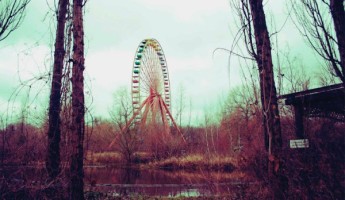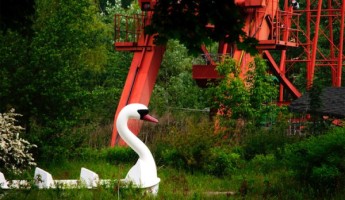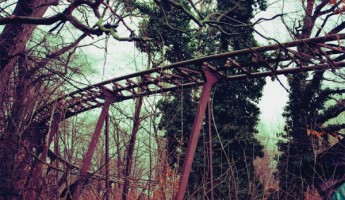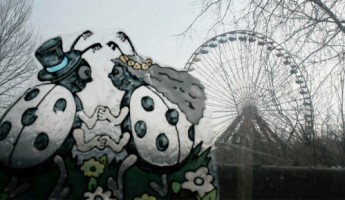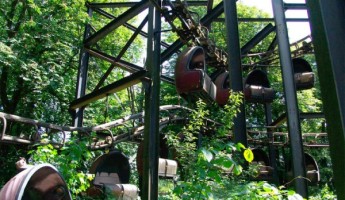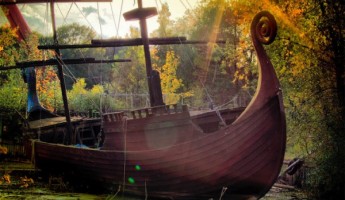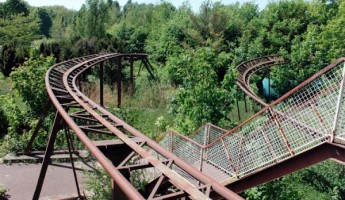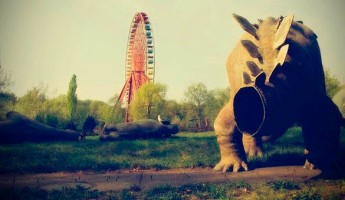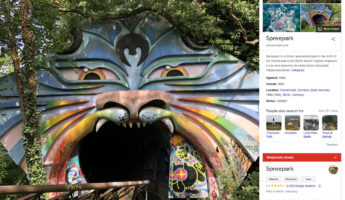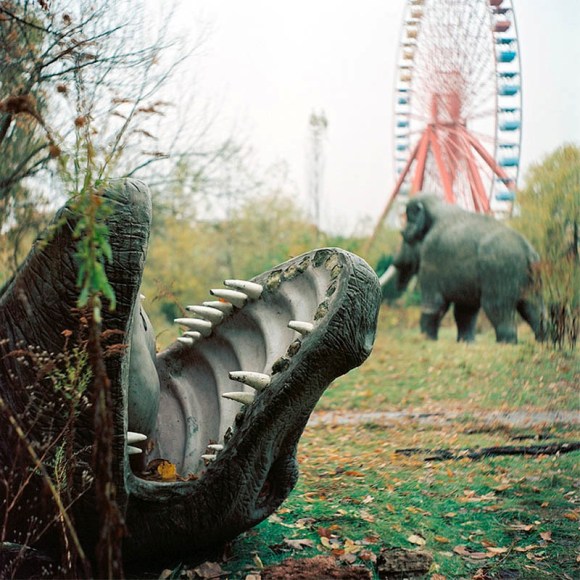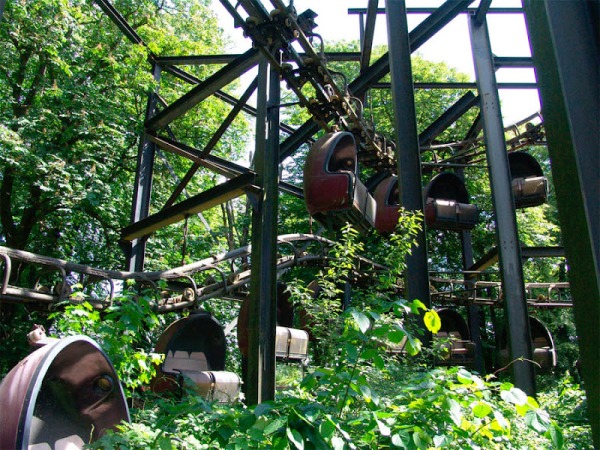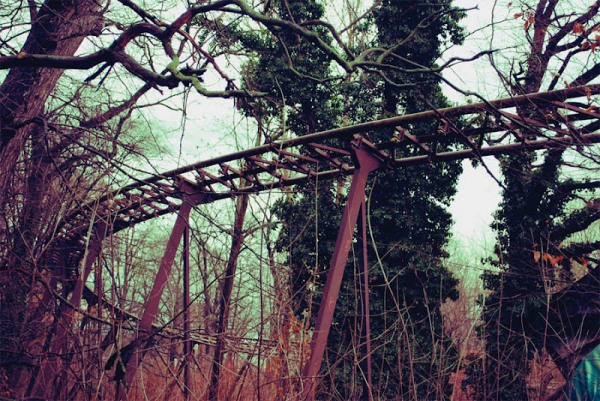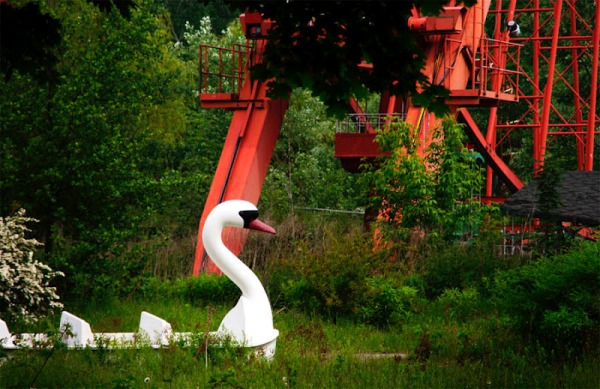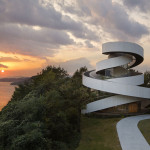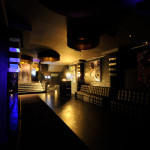Resting peacefully in the middle of the major city of Berlin, Germany sits the remains of an old amusement park that went bankrupt in 2001 — it’s called Spreepark.
Along with the blankets of morning mist is an eerie atmosphere left by the remnants of dilapidated model dinosaurs and the forgotten and weathered buildings. The deteriorating park blends into its surroundings and is overridden with weeds, ferns and the overgrowth of trees.
Visitors looking to explore the grounds step over reminders of the past when the park was crowded and thriving full of adventure seekers. Still standing tall is the boldly colored elegant Ferris wheel that now looks over the rusting dinosaurs, teacup rides, and roller-coasters that seem to cascade and disappear into the nearby forest.
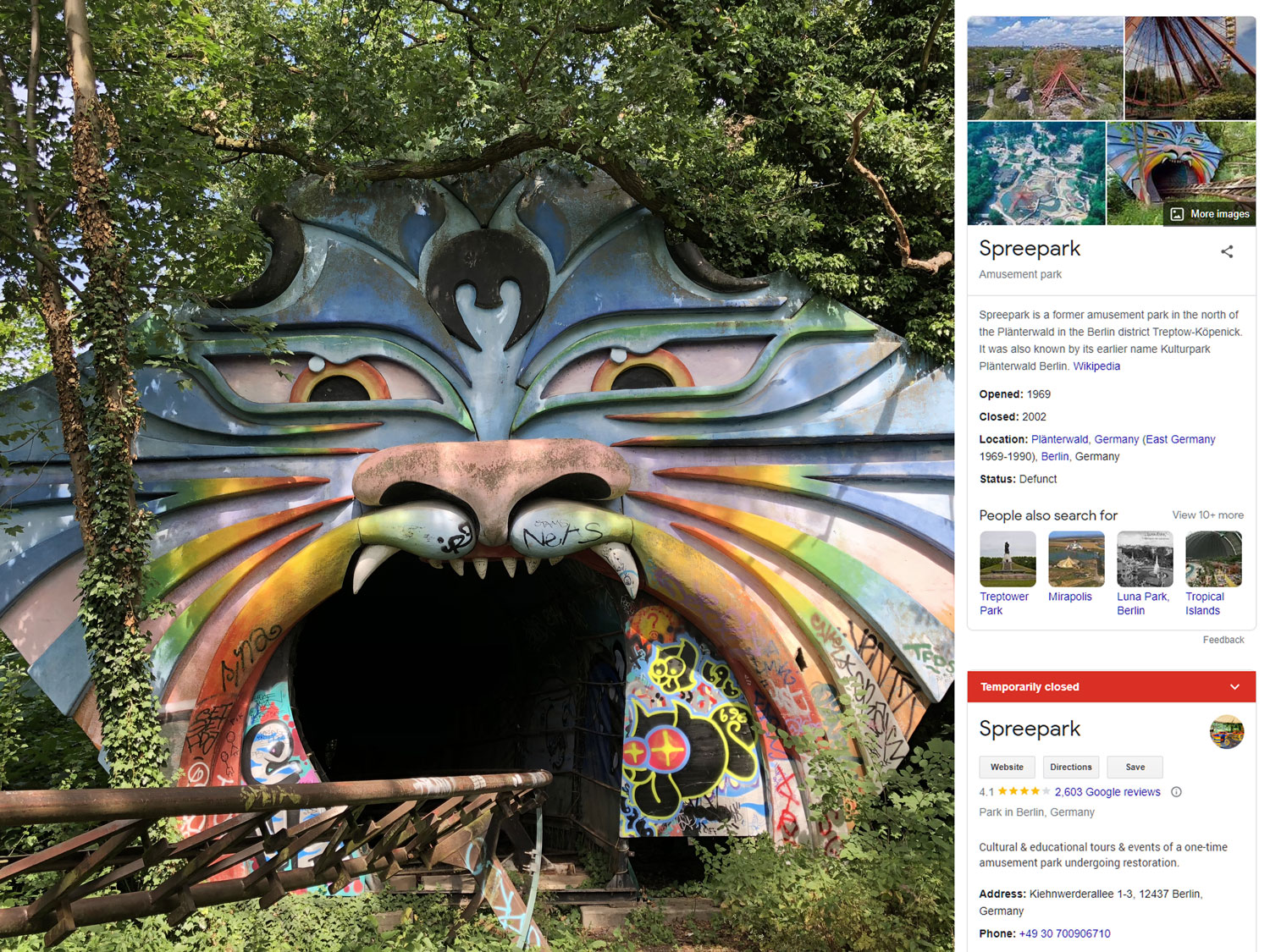
Spreepark’s Rise and Fall
Spreepark, once a beacon of joy in East Berlin, opened in October 1969 as the GDR’s premier amusement park. Its location, sandwiched between the Plänterwald forest and the Spree River, offered a unique combination of natural beauty and entertainment. The park’s crown jewel was its Ferris wheel, unveiled on the 40th anniversary of the socialist republic in 1989, symbolizing the pride and joy of East Germany.
However, the park’s fate took a dramatic turn with the fall of the Berlin Wall. The ensuing reunification of Germany brought about immense cultural and economic shifts. East Germans, once restricted to domestic leisure activities, now had access to more sophisticated theme parks in the West. This shift led to a significant drop in visitor numbers, from 1.5 million at its peak to barely half of that in the following years.
View in gallery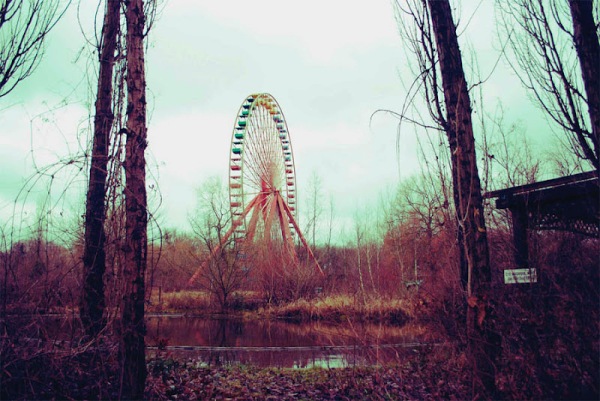
View in gallery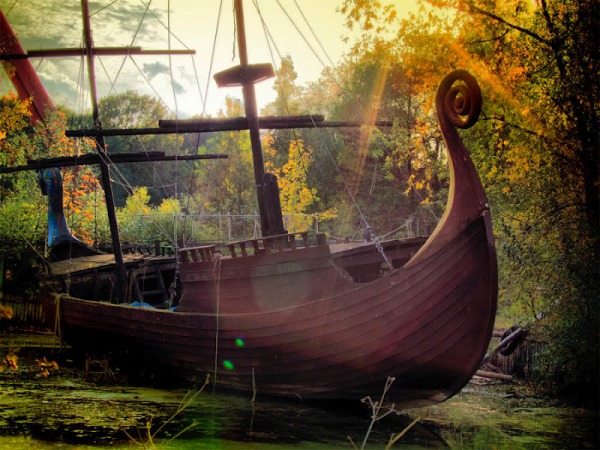
In 1991, the newly unified German government, grappling with economic restructuring, sold Spreepark to Norbert Witte, a man with a colorful past in the amusement park industry. Witte, known for his grand visions, embarked on a mission to revitalize Spreepark. He introduced a variety of new attractions, including an amphitheater for stunt shows, a Wild West village, and a section designed to mimic Old England, complete with mock-Tudor architecture. Despite these efforts, the park struggled to regain its former glory.
Financial troubles continued to plague Spreepark under Witte’s management. Conflicts with local authorities over conservation laws and parking space limitations added to the park’s woes. In a desperate bid to turn the tide, Witte attempted to ship some of the park’s rides to Peru in 2002. This bizarre plan, reminiscent of an adventurous movie plot, ended in scandal when authorities discovered a large shipment of cocaine hidden in the equipment, leading to Witte’s imprisonment and his son’s prolonged incarceration in Peru.
Spreepark’s Second Life: From Amusement Park to Cultural Icon
Post-closure, Spreepark took on a new life, transforming from a place of amusement to an eerie yet fascinating cultural landmark. The once vibrant rides and attractions, now weathered by time and nature, create a surreal landscape that has captured the imagination of artists, filmmakers, and urban explorers. The park’s unique ambiance has made it an ideal setting for various artistic endeavors, including the filming of major movie climaxes and music festivals.
View in gallery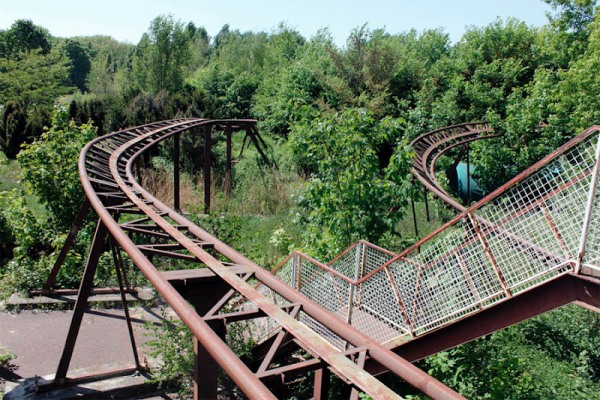
View in gallery
Urban explorers and photographers, drawn to the park’s haunting beauty, have extensively documented its decay. These visual narratives offer a poignant glimpse into the transience of human creations and the relentless reclaiming power of nature. The park’s state of disrepair and its overgrown environment have become symbols of a bygone era, reflecting the broader socio-political changes that Berlin and Germany have undergone since the fall of the Berlin Wall.
Local authorities and Berliners view Spreepark with a mix of nostalgia and curiosity. Despite its dilapidated state, there is strong public sentiment against redeveloping the site into something unrecognizable. The emotional connection many Berliners have with Spreepark, stemming from childhood memories or a fascination with its unusual history, has turned the park into a beloved urban artifact.
The Future of Spreepark: Preserving History Amidst Modern Challenges
The debate over Spreepark’s future is ongoing. While there’s consensus on preserving its historical and cultural significance, the practicalities of maintaining or repurposing the site pose challenges. Ideas have ranged from restoring some of the park’s attractions to creating a museum or a memorial site dedicated to its history. However, financial constraints and the complexity of dealing with a site so heavily influenced by both nature and history make any decision difficult.
In the meantime, Spreepark remains a silent witness to the passage of time, its rusting rides and overgrown paths telling a story of joy, tragedy, and the inevitable march of time. It stands as a testament to the cultural and historical shifts of Berlin, a city that has seen dramatic transformations over the past few decades. For visitors and locals alike, Spreepark offers a unique glimpse into a past that is slowly fading but not yet forgotten.
Update: Since 2016, the Grün Berlin GmbH is responsible for the park and is developing a new type of leisure park.

